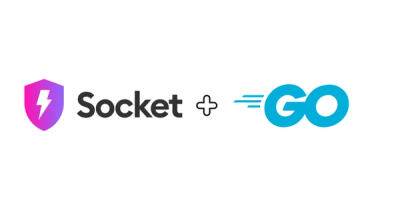
Research
npm Malware Targets Telegram Bot Developers with Persistent SSH Backdoors
Malicious npm packages posing as Telegram bot libraries install SSH backdoors and exfiltrate data from Linux developer machines.
strawberry-resources
Advanced tools
Introspection utilities to extract data from the schema to use as helpers in the client, like building an automatic form for input types.
Just install the package with pip or your preferred package manager:
pip install strawberry-resources
This lib provides a Query type that has two queries:
resources: Returns a list of all available resources in the schemaresource: Returns an specific resource given its nameYou can use merge_type
to merge it with your own Query type.
Then, given this example:
@strawberry.enum
class Color(enum.Enum):
YELLOW = strawberry.enum_value("yellow", description="Color Yellow")
RED = "red"
ORANGE = "orange"
@strawberry.type
class Fruit:
name: str
color: Annotated[Color, config(label="Color")]
weight: Annotate[float, strawberry_resource.config(label="Weight")]
@strawberry.type
class Market:
name: Annotate[str, strawberry_resource.config(label="Market Name")]
fruits: Annotate[List[Fruit], strawberry_resource.config(label="Fruits")]
@strawberry.type
class Query:
market: Market
You can query resource(name: "Market") which would return:
{
"resource": {
"name": "Market"
"fields": [
{
"__typename": "Field",
"choices": null,
"defaultValue": null,
"filterable": false,
"helpText": null,
"kind": "STRING",
"label": "Market Name",
"multiple": false,
"name": "name",
"orderable": false,
"resource": null,
"validation": {
"__typename": "BaseFieldValidation",
"required": true
}
},
{
"__typename": "FieldObject",
"label": "Fruits",
"name": "fruits",
"objKind": "OBJECT_LIST"
"fields": [
{
"__typename": "Field",
"choices": null,
"defaultValue": null,
"filterable": false,
"helpText": null,
"kind": "STRING",
"label": "name",
"multiple": false,
"name": "name",
"orderable": false,
"resource": null,
"validation": {
"__typename": "BaseFieldValidation",
"required": true
}
},
{
"__typename": "Field",
"choices": [
{
"group": null,
"label": "Color Yellow",
"value": "YELLOW"
},
{
"group": null,
"label": "RED",
"value": "RED"
},
{
"group": null,
"label": "ORANGE",
"value": "ORANGE"
}
],
"defaultValue": null,
"filterable": false,
"helpText": null,
"kind": "STRING",
"label": "Color",
"multiple": false,
"name": "color",
"orderable": false,
"resource": null,
"validation": {
"__typename": "BaseFieldValidation",
"required": true
}
},
{
"__typename": "Field",
"choices": null,
"defaultValue": null,
"filterable": false,
"helpText": null,
"kind": "FLOAT",
"label": "Weight",
"multiple": false,
"name": "weight",
"orderable": false,
"resource": null,
"validation": {
"__typename": "BaseFieldValidation",
"required": true
}
}
],
}
],
}
}
You can also use the resources statically by exporting them by using the command:
strawberry_resources export --app-dir <schema>
The export functions are also exposed in strawberry_resources.exporter. There are
2 functions there:
to_dict: Will export the resources to a dictionaryto_json: Will export the resources to a json string (used by the command above)Strawberry resource will introspect the schema to automatically fill some information regarding the field. However, you can customize them by annotating your fields with your own config.
In the example above we customized the label for most attributes, except for Fruit.name.
All possible config options are:
kind (FieldKind): The kind of the fieldmultiple (bool): If the field is multivalued (i.e. a List)orderable (bool): If the field is orderable`filterable (bool): If the field is filterable`label (str | None): An optional human friendly label for the fieldhelp_text (str | FieldChoice): An optional list with available choices for the fielddefault_value (JSON | None): The default value for the fieldvalidation (BaseFieldValidation): Validation options for the fieldCheck the types.py module for more details.
If you are using Django, and by extend strawberry-graphql-django or strawberry-django-plus, the integration will be automatically used to configure some options by introspecting your model.
The following will be retrieved from the fields in it, specially when typing it with
strawberry.auto:
kind: The field kind will be automatically set based on the model field type. e.g. a CharField
will generate a kind of STRING, a DateTimeField will generate a kind of DATETIME and so on.orderable: Will be automatically filled if the django type has an
ordering
set on it, and the field itself is therefilterable: Will be automatically filled if the django type has
filters
set on it, and the field itself is therelabel: Will be automatically filled using the field's verbose_name valuehelp_text: Will be automatically filled using the field's help_text valuechoices: Will be automatically filled using the field's choices valuedefault_value: Will be automatically filled using the field's default valueYou can create your own extension by creating an instance of
strawberry_resources.integrations.StrawberryResourceIntegration. It expects 4 attributes:
name: The name of the integrationget_extra_mappings: A callable that should return a dict mapping a type to a FieldKindget_field_options: A mapping that receives the type that contains the field, the field itself,
the resolved type of the field and if it is a list of not. It is expect to return a dict with
the options mentioned in the section above.order: An optional order to be used when running the integrations.The integrations will run in the order they are defined. The official integrations in
this repo all have an order of 0, so you can define yours to run before them by passing
a negative value, or after them by passing something greater than 0.
NOTE: strawberry-resources is eager to have more integrations, so feel free to open a PR for us sending yours! :)
All options will be merged recursively to generate the final resource options. That means that options defined later will override the ones defined earlier. The order is the following:
kind retrieved from the kind mapping (considering the
ones returned by the integrations as well), and its label will be set the same as its name
by default.The code in this project is licensed under MIT license. See LICENSE for more information.
FAQs
Introspection utilities to extract data from strawberry graphql
We found that strawberry-resources demonstrated a healthy version release cadence and project activity because the last version was released less than a year ago. It has 1 open source maintainer collaborating on the project.
Did you know?

Socket for GitHub automatically highlights issues in each pull request and monitors the health of all your open source dependencies. Discover the contents of your packages and block harmful activity before you install or update your dependencies.

Research
Malicious npm packages posing as Telegram bot libraries install SSH backdoors and exfiltrate data from Linux developer machines.

Security News
pip, PDM, pip-audit, and the packaging library are already adding support for Python’s new lock file format.

Product
Socket's Go support is now generally available, bringing automatic scanning and deep code analysis to all users with Go projects.